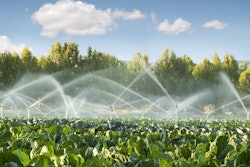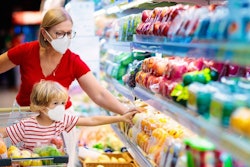
Extreme weather events pose a significant challenge for the agriculture industry. In just the past few months, the United States experienced a bomb cyclone, severe flooding and a major drought. Unfortunately, the magnitude and frequency of severe weather events and natural disasters are increasing. As explained by the Environmental Protection Agency, “extreme weather events such as heat waves and large storms are likely to become more frequent or more intense with human-induced climate change.”
Unpredictable and extreme weather is especially harmful to the agriculture sector, given its dependence on the environment and the fact that it primarily operates outdoors. Additionally, the agriculture industry is highly time sensitive — produce can spoil if not handled properly and efficiently. Crops, livestock and equipment are all susceptible to damage in the case of a weather emergency. Likewise, transportation and packaging processes can be detrimentally affected by disruptions due to severe weather. If not addressed swiftly, such delays can result in the loss of product. These losses can have a significant financial impact on business owners and consumers alike.
Another compounding risk factor for the agriculture industry is that it often functions in remote areas that lack connectivity. In the case of an extreme weather event, accurate, real-time information is paramount. Clear communication and information sharing demands reliable connectivity. However, even for agriculture businesses that do exist in areas with cellular coverage, extreme weather can disrupt or disable that connectivity. Luckily, satellite coverage is always on and is designed to reach isolated areas. Satellite trackers and Internet of Things (IoT) devices can reliably provide critical data and should be strongly considered by agriculture business owners to manage their valuable resources.
Satellite IoT can provide near global connectivity, as opposed to terrestrial telecommunication services which are rarely able to ensure coverage in remote areas. Satellite connectivity is relied upon to save thousands of lives each year, further underscoring the dependability of this technology.
For personnel working in remote locations, such as farm equipment operators, fire fighters or fishermen. Satellite messengers can be used to share information on location and status in case of an emergency. If thousands of individuals have faith in satellite communications when their lives are at stake then business owners should rest assured when utilizing the same technology to monitor their equipment, fleets or assets.
IoT devices utilize sensors and GPS tracking tools to remotely indicate the precise location and status of each asset. With satellite IoT asset management devices, business owners can accurately monitor the condition of their assets in real time such as the conditions of produce, the location of livestock and more. Visibility into the location, temperature, pressure or health of an agricultural asset can be crucial during an extreme weather event.
The consistent flow of actionable data generated by satellite IoT devices can immediately notify users of any disruptions. Data transmissions from a satellite IoT device promptly alert personnel to issues, meaning the disturbance can immediately be addressed and the potential consequences can be mitigated.
For instance, an IoT solution developed by an Argentine agriculture technology startup and empowered by satellite modem transmitters allows for the remote monitoring of grain conditions stored in silo bags. The IoT solution can collect information on the temperature, humidity, CO2 levels, real-time geolocation and detect rips. While such information is always valuable, it is especially useful during a severe storm or other weather events. This example not only demonstrates the degree of visibility that IoT devices can provide, but also their capacity for customization.
Embedded satellite IoT modules can integrate with a wide range of hardware based on the necessary application. Several companies have developed collars embedded with satellite IoT chips that can track and monitor livestock such as cattle or horses. In these instances, it is crucial that the satellite IoT chip is small and lightweight so as not to harm the animal. These devices can monitor the animal’s location, welfare, feed intake and more to deliver crucial insights to farmers.
Customization is also valuable on the software end of IoT. Instead of custom-coding for specific device hardware, certain IoT platforms provide low-code platform, hardware abstraction and unified APIs that developers can utilize. Artificial intelligence (AI)-driven applications can identify and send exclusively actionable data from the edge, effectively reducing the transmission fees and improving operational performance, saving on investment of equipment, water, fertilizer, herbicides, seed and feed.
While climate change presents an urgent problem for the agriculture sector, it’s worth noting that the features enabled by satellite IoT can strengthen the industry’s resilience in the face of several other prevalent issues. Dependable, customized information and improved visibility can help the agriculture industry overcome challenges like widespread disease among crops and livestock, and current supply chain instability. Accurate, real-time data is always an advantage. However, during an extreme weather event these capabilities are not only useful but necessary.
While these events cannot always be predicted or avoided it is always possible that one can prepare for them. With severe storms and weather predicted to continue for years to come now is the time for the agriculture sector to invest in tools, such as satellite IoT. These tools can bolster their ability to navigate such events effectively. Doing so will maximize economic stability for business owners and ensure that communities continue to receive the food and resources they depend on.

















